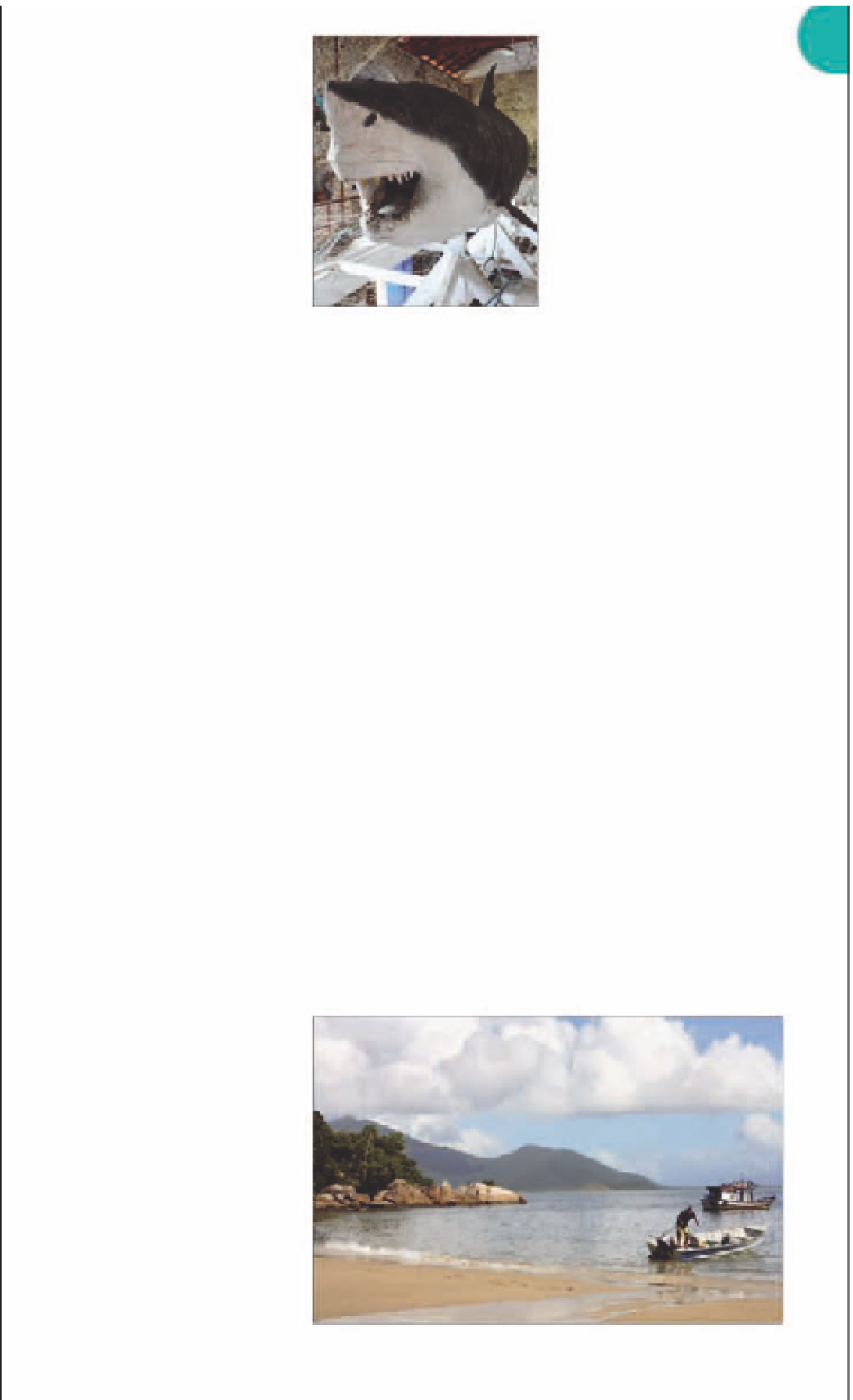Travel Reference
In-Depth Information
Ilha do Cardoso
0
g
from Cananéia.
n
Núcleo
Perequê, Cananéia, (013) 3815 1108.
www
.cananeia.net
photographs. The
Museu de
Arte Sacra
in the 18th-century
Igreja do Rosário houses some
100 ecclesiastical objects, most
of which date from the 18th
and 19th centuries.
Just a two-hour boat ride
south of Cananéia, Ilha do
Cardoso, a rugged 37,000-acre
(15,000-ha) island, rises
dramatically out of the Atlantic
Ocean. The island is primarily
an ecological preserve which
also has beautiful deserted
beaches and walking trails.
Together with Juréia-Itatins
and Superagüi
(see p339)
across the border in Paraná,
it forms the core protected
area of the Brazilian coastal
rainforest. Wetlands, man-
groves, extensive beaches,
coastal dunes and all of
the numerous forest types
associated with the Mata
Atlântica are found here.
Several species of turtle nest
on the island, caimans live in
the rivers and estuaries and
jaguars and pumas still hunt
in the forests that cover the
upper reaches. The island is
also rich in birdlife.
Pre-Columbian shell
middens, or
sambaquis
,
dot the park's beaches and
six traditional
caiçara
fishing
communities live within the
park, preserving a semi-
indigenous way of life which
has so far largely resisted the
pressures of urbanization.
Caiçara
tidal fish traps can
be seen in the shallows of
the various little rivers and
bays, attesting to the strong
indigenous heritage the com-
munities preserve to this day.
Many of the
caiçaras
act as
guides and boatmen.
Environs
Just across the Rio Ribeira
do Iguape estuary, east of the
town center, are extensive
stretches of fine white sand
beaches which make up the
island of
Ilha Comprida
. They
are accessible by road, or a
5-mile (8-km) walk across the
estuary and sand flats via the
pedestrian bridge.
Boqueirão Norte
, located
immediately across the town,
and
Praia do Viareggio
,
6 miles (10 km) south, are
popular in high season and
lined with holiday homes.
Farther south still and reach-
able by dune buggy or by
car is the far quieter
Praia
das Pedrinhas
.
E
Museu de Arte Sacra
Igreja do Rosário, Rua 15 de
Novembro s/n.
#
9-11:30am &
1-5:30pm Mon-Sat.
&
E
Museu Histórico e
Arqueológico
Rua das Neves 45.
Tel
(013) 3841
3358.
#
9-11:30am & 1-5:30pm
Tue-Sun.
&
^
Stuffed great white shark, Museu
Municipal, Cananéia
from the docks in Cananéia
to
Ilha do Cardoso
that lies in
the Lagomar bay. Car and
passenger rafts take 10
minutes to ferry across the
estuary in front of the town
to the southern reaches of
the
Ilha Comprida
, east of
Iguape, and do so several
times per day. The beaches
here lie a short distance
beyond the island's ferry
port along a sandy road,
which is lined with a handful
of tumble-down
pousadas
.
While in Cananéia, it is
worth visiting the tiny town
museum,
Museu Municipal
,
which preserves bits of
nautical miscellany. Pride
of place among the exhibits
goes to what is reputed to
be the largest great white
shark ever, weighing a
hefty 7,716 lb (3,500 kg),
now stuffed, painted, and
hanging safely from the
museum ceiling.
E
Museu Municipal
Rua Tristão Lobo 78.
Tel
(013) 3851
1753.
#
noon-6pm Mon-Fri,
10am-4pm Sat & Sun.
&
Cananéia
9
*
14,000.
@
n
Av Beira Mar
247, (013) 3851 1753.
www
.cananeia.net
Cananéia is the farthest south
of São Paulo's small colonial
seaside towns, and like the
others, it lies nestled at the
feet of the Serra do Mar
mountains overlooking
stretches of mangrove and
an open ocean dotted with
forest-covered islands.
Outside of the high season
few visitors ever make it here
and the town's crumbling
colonial streets and fig tree-
filled central square often
have a sleepy feel to it.
The most compelling
reason to come to Cananéia
is to take a boat trip out to
the beaches and islands;
preferably with plenty of time
to spare. Fishing boats and
launches can be chartered
Virgin beach on Ilha do Cardoso, near Cananéia




































